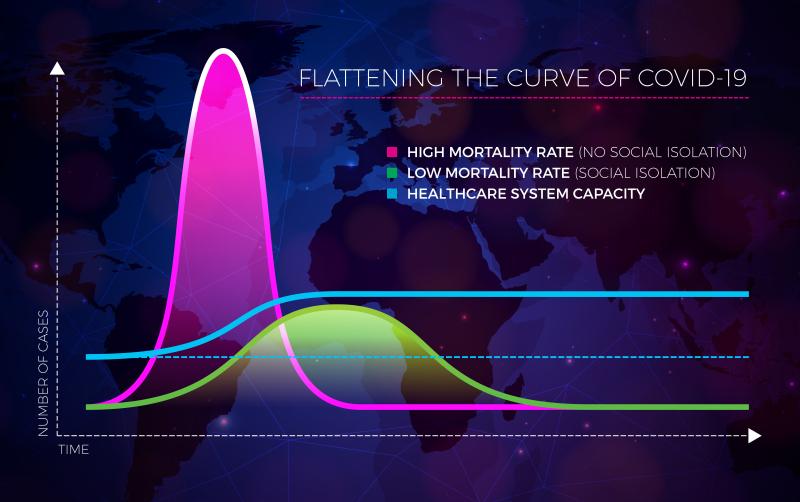How the Pandemic Changed the Demand for Enterprise Software

1. The Expedited Surge in Remote Work Infrastructure
The abrupt migration to remote work constituted one of the most immediate disruptions, spurring an insatiable demand for collaborative and productivity-enhancing software.
Pivotal Trends:
- Widespread integration of digital communication platforms such as Microsoft Teams, Zoom, and Slack to sustain engagement among geographically dispersed workforces.
- Escalating reliance on cloud-centric project orchestration tools like Trello, Asana, and Monday.com to uphold workflow transparency and efficiency.
- Fortified cybersecurity protocols to shield corporate data in decentralized environments, with an uptick in the deployment of VPNs and endpoint security frameworks.
Consequential Impact:
The proliferation of remote work solutions precipitated an exponential upsurge in adoption rates, with businesses witnessing substantial enhancements in workforce agility and cohesion. Organizations, irrespective of scale, began prioritizing modular and adaptive software ecosystems to future-proof their remote work paradigms.
2. Unprecedented Expansion in Cloud Computing
The pandemic underscored the indispensability of scalability, fluidity, and omnipresent accessibility, propelling enterprises toward cloud-powered architectures.
Key Catalysts:
- Dominance of cloud juggernauts such as AWS, Microsoft Azure, and Google Cloud, which facilitated seamless scalability to accommodate erratic market dynamics.
- Escalating deployment of cloud-based Enterprise Resource Planning (ERP) solutions like SAP and Oracle NetSuite to govern mission-critical operations remotely.
- Surge in hybrid cloud implementations, striking a judicious equilibrium between on-premises security and the agility of cloud frameworks.
Broad-Spectrum Impact:
Entities that had previously embraced cloud paradigms found themselves at a strategic vantage point, while lagging adopters raced to digitize their infrastructures, ensuring operational continuity amidst widespread disruptions.
3. Escalation in Cybersecurity Imperatives
The precipitous embrace of remote and cloud technologies engendered an unprecedented surge in cyber vulnerabilities, galvanizing enterprises to fortify their digital fortresses.
Emerging Trajectories:
- Adoption of endpoint protection solutions to safeguard remote workstations against cyber incursions.
- Implementation of zero-trust security architectures, necessitating rigorous authentication protocols for every user and device accessing enterprise ecosystems.
- Infusion of AI-enhanced cybersecurity mechanisms for proactive threat intelligence and mitigation.
Overarching Impact:
Cybersecurity ceased to be a peripheral concern, metamorphosing into a fundamental component of enterprise infrastructure. Corporations funneled substantial investments into digital defenses, recognizing that robust security frameworks were paramount to safeguarding stakeholders and proprietary assets.
4. Evolution of Supply Chain Management Frameworks
The pandemic’s disruptions exposed glaring frailties within traditional supply chains, necessitating a paradigm shift toward resilient, tech-driven logistics management.
Strategic Interventions:
- Integration of AI-driven analytics to furnish real-time insights and preempt supply chain bottlenecks.
- Adoption of cloud-centric inventory management solutions, enabling meticulous tracking across disparate locations.
- Deployment of blockchain-enhanced platforms to engender transparency and integrity within global supply networks.
Measurable Outcomes:
Corporations recalibrated their logistics frameworks, embedding intelligent software solutions to bolster supply chain robustness, curtail inefficiencies, and mitigate operational risks.
5. Expansion of E-Commerce and Customer Experience Ecosystems
The pandemic heralded a dramatic acceleration in digital commerce, prompting businesses to refine their online engagement strategies and elevate customer interactions.
Defining Trends:
- Ubiquitous integration of Customer Relationship Management (CRM) suites such as Salesforce and HubSpot to enrich customer engagement.
- Growing traction of omnichannel retail solutions, ensuring seamless cross-platform user experiences.
- Proliferation of AI-powered chatbots and virtual assistants to optimize customer service responsiveness.
Industry-Wide Repercussions:
The concerted focus on e-commerce and customer-centric software fortified brand loyalty, sustained revenue streams, and ensured business viability despite economic turbulence.
6. Intensified Emphasis on Automation and Artificial Intelligence
The exigencies of the pandemic underscored the imperative for efficiency optimization, igniting a widespread shift toward automation and AI-infused enterprise applications.
Core Use Cases:
- Integration of Robotic Process Automation (RPA) to streamline labor-intensive tasks such as payroll administration and invoice reconciliation.
- Deployment of AI-driven analytics for data-informed decision-making in unpredictable market climates.
- Utilization of predictive maintenance algorithms to preemptively avert system failures in industrial sectors.
Transformative Impact:
The infusion of AI and automation engendered cost efficiencies, enhanced productivity, and liberated human capital for strategic endeavors, redefining conventional workflows.
7. Proliferation of Health and Workplace Safety Solutions
With employee well-being ascending to paramount importance, enterprises turned to sophisticated health management platforms to uphold workplace safety.
Key Innovations:
- Contact tracing software to monitor potential COVID-19 transmissions within corporate settings.
- Self-assessment health applications facilitating employee symptom reporting and remote wellness monitoring.
- Compliance management platforms ensuring adherence to evolving public health directives and regulatory mandates.
Organizational Impact:
Health and safety technologies became non-negotiable fixtures within corporate infrastructures, fostering a culture of vigilance, compliance, and trust.
8. Heightened Priority on Data Synchronization and System Interoperability
The pandemic spotlighted the necessity for interconnected ecosystems capable of harmonizing disparate corporate functions and data repositories.
Advancements in Integration:
- Widespread adoption of APIs to facilitate seamless data interchange across HR, finance, and operational verticals.
- Increasing reliance on enterprise integration platforms such as MuleSoft and Zapier to orchestrate automated workflows.
- Consolidation of disparate data sources via business intelligence dashboards, enabling real-time, strategic insights.
Resulting Impact:
Enhanced data fluidity and cross-functional transparency empowered enterprises to navigate crises with agility and make informed, adaptive decisions.
Conclusion
The COVID-19 pandemic served as an inflection point, radically reshaping the enterprise software landscape and expediting digital transformation across industry verticals. Organizations swiftly discerned the indispensability of agility, cloud scalability, and cybersecurity, funneling investments into technological innovations that facilitated adaptation and growth. From telework enablement and AI-driven analytics to supply chain resilience and customer engagement tools, enterprise software emerged as the bedrock of business survival and competitive differentiation in an era of uncertainty.
As the business world advances beyond the pandemic’s immediate upheavals, the insights gleaned from this period will continue to sculpt the trajectory of enterprise technology, ensuring that organizations remain fortified against future contingencies and poised for sustained evolution.






